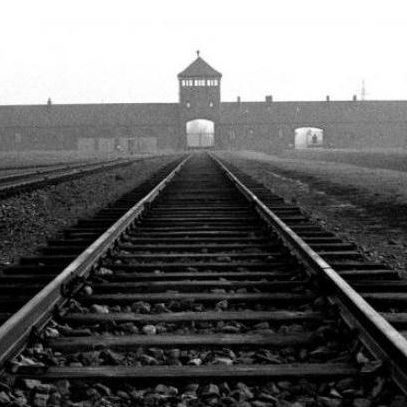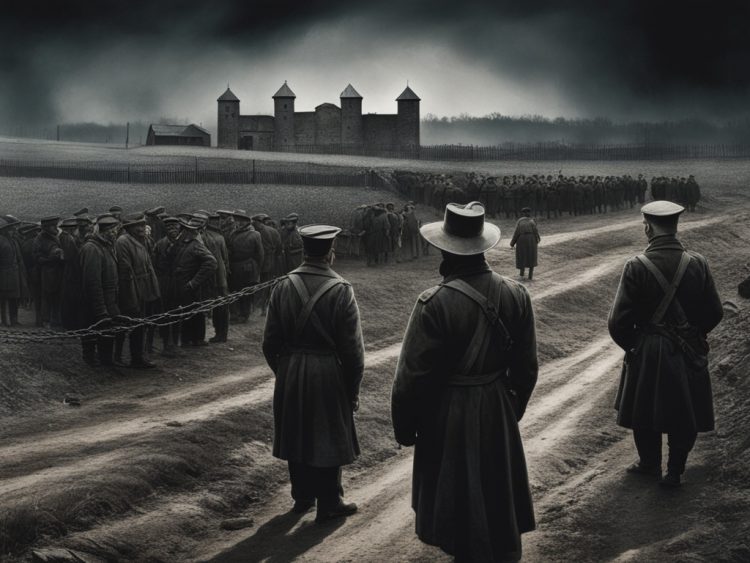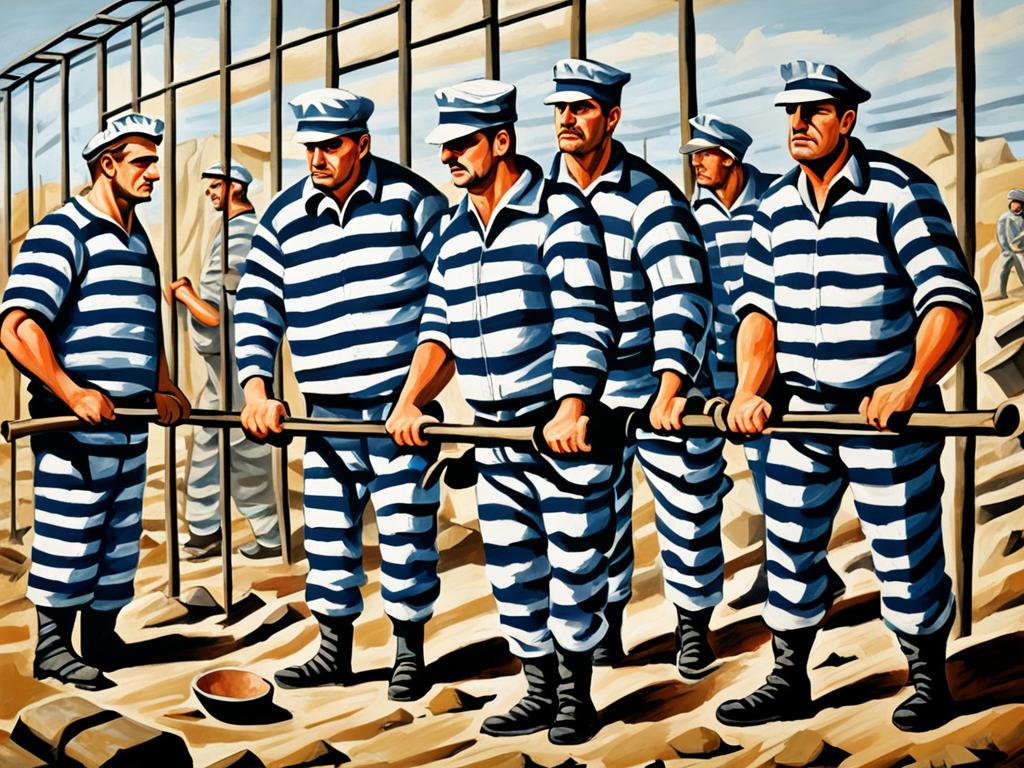In history, KL Auschwitz is known for its deep cruelty. It was in occupied Poland, where a place became the worst of Nazi camps. This place showed us the worst of World War II.
Auschwitz I started in June 1940, using old Polish army buildings. It began with twenty brick buildings. But soon, it grew into a huge camp, holding thousands. It became a symbol of the Holocaust’s dark side.
The camp changed quickly and sadly. First, prisoners slept on straw mattresses. Then, they were packed tightly on three-tiered bunks. This made life hard, with many fighting for basic needs.
Conditions were harsh, with lice and diseases everywhere. Surviving was a daily fight in Auschwitz.
Auschwitz’s story goes beyond construction. It’s about a successful terror system. The camp’s detailed records showed they treated people like numbers.
Many camps existed by 1944, but Auschwitz was unique. Over a million died there. It symbolized genocide.
Camp management was businesslike. SS managers sought efficiency. Auschwitz became notorious.
On International Holocaust Remembrance Day, we honor Auschwitz victims. Today, we remember the Holocaust and vow never to repeat such cruelty.
Origins of KL Auschwitz in Occupied Poland
Auschwitz began a dark time in Nazi-occupied Poland in 1940. Situated on land taken from Oświęcim, it became a symbol of Nazi evil. The camp was meant to demonstrate Nazi power and kill undesirables.
Auschwitz was huge and the Nazis’ plan was deadly. Auschwitz’s tale is a warning to learn from history to prevent such crimes.
The Expansion and Evolution of Auschwitz
World War II’s Third Reich’s dark plan expanded Auschwitz. This growth included building Birkenau (Auschwitz II) and many subcamps. Each part was important to the camp’s massive operation.
Birkenau held over 90,000 prisoners in 1944. This shows how Nazis expanded and mistreated people. About 1,000 Polish and Jewish homes were demolished to build Birkenau.
Auschwitz’s subcamps showed its scope. Up to 10,000 prisoners were held in Buna (Monowitz). Camps for German industries, including old and new factories around Auschwitz, were modified for wartime use.
- Auschwitz I (Main Camp): Held about 15,000 prisoners, sometimes more than 20,000.
- Auschwitz II (Birkenau): Became a main place for killing, holding over 90,000 by 1944.
- Auschwitz III (Monowitz) and subcamps: Had over 40 smaller camps helping the Nazi war effort.
SS families occupied a large area around the camps. Workshops and other camp supplies were there. This area concealed Auschwitz’s true nature.
Polish National Remembrance Day for Nazi camp victims is June 14. It honors the 1940 arrival of Polish prisoners. Auschwitz’s dark history began here.
Auschwitz’s growth shows Nazis’ ambitions and victims’ fortitude. It’s now a place to contemplate human cruelty and survival.
Life Inside Auschwitz I: Conditions and Labour
Auschwitz I depicts prisoner life and forced labor. By mid-1942, it had 28 brick buildings from 20. These buildings were meant for 700 but held 1,200, making living conditions miserable.
Sanitation was bad. Diseases spread easily with 22 toilets for many. Water and latrines were scarce, causing health problems.
It was cold due to poor heating. Barracks had one chimney for many people, making room heating difficult. 15 people shared a small space with stacked beds.
| Facility | Description | Impact on Prisoner Health |
|---|---|---|
| Bedding Arrangements | Three-tier wooden bunks for 15 prisoners each | Severe overcrowding, leading to unsanitary conditions and increased disease transmission |
| Heating | Single chimney ducts in wooden barracks | Inadequate heating contributing to harsh living conditions during winter |
| Sanitation Facilities | 22 toilets per building with limited washing facilities | Inadequate sanitation leading to frequent disease outbreaks |
| Water Supply | Initially from two wells, minimal improvements later | Lack of sufficient safe drinking water and basic hygiene |
| Labor Conditions | 11-hour minimum working day, extended in summer | Excessive physical exertion without adequate nutrition or rest |
Labor was hard. Daytime prisoners worked 11 hours, summer more. Due to poor food and rest, many became ill and died. KL Auschwitz was cruel. It was designed to break people with poor living and working conditions. This place evokes WWII horrors.
KL Auschwitz: From Extermination to Symbol of Genocide
Over one million died at Auschwitz. Many died in the Holocaust. The camp’s nearly 50 sites helped the Nazis execute their evil plans. Jews, Poles, Romani, Soviet prisoners, and others were trapped in a killing system.
The USSR liberated Auschwitz on January 27, 1945. It changed WWII and history. The Allies saw the Nazi genocide’s true horror in the camps. Global shock and anger ensued.
Auschwitz memorializes those who died there. It captures the worst of human nature and the resilience of survivors. The ruins and memorials remind us to remember and teach about hate.
Auschwitz reminds us to fight evil together. Every visitor and story tells a survival and hate-fighting story. This fight is essential to preventing such tragedies.
Birkenau (Auschwitz II): The Extermination Complex
Auschwitz II, or Birkenau, was a dark time. Gas chambers were its main feature for mass extermination. Located at 50°02′09″N 19°10′42″E, it encompassed the Polish village of Brzezinka. More than 1.3 million people were detained and 1.1 million died.
960,000 Jews, 74,000 Poles, 21,000 Romani, 15,000 Soviet prisoners, and others were included.
Hard living conditions in the camp. Barriques held over 700 people, too many for their size. Before 1944, they lacked windows, heating, electricity, and sanitation. Tight spaces housed wooden ‘buks’ mattresses.
Resistance was brave but difficult. The 7 October 1944 Sonderkommando uprising was heroic but failed. Of those who fled, 144 succeeded.
Only 15% of the Schutzstaffel were tried after the war. Red Army liberation on 27 January 1945 was pivotal. Auschwitz symbolizes the “Final Solution” and human cruelty.


